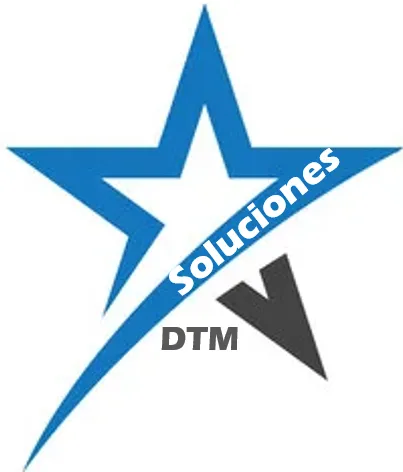We struggled to deliver high-quality digital advertising companies at the pace and value we needed. We’re now a very completely different group, with a contemporary mindset, and we credit Red Hat as a giant contributor to that success. If you’re excited about utilizing OpenShift, several assets are available to assist you get started.
Soloio Acknowledged As A Visionary Within The 2024 Gartner® Magic Quadrant™ For Api Management For The Second 12 Months In A Row
OpenShift Container Platform schedules and runs all containers in a pod on the identical node. Complex purposes are made up of many pods, each with their very own containers. They interact externally and in addition with one other contained in the OpenShift Container Platform surroundings. In OpenShift Container Platform, pods replace particular person software containers because the smallest deployable unit. Red Hat OpenShift is on the market as a turnkey software platform from major cloud providers. Build, modernize, and deploy functions at scale on the cloud supplier of your selection.
Pink Hat Openshift Container Platform Capabilities
OpenShift registry is also built-in into the cluster’s authentication and authorization system, enabling developers to have fine-grained management over container pictures. Red Hat OpenShift is a quantity one container utility platform that simplifies the development, deployment, and administration of purposes. This information explores the options and benefits of OpenShift, including its help for Kubernetes, scalability, and developer-friendly instruments.
What’s Openshift? And How To Make Openshift Monitoring Easy
Cluster knowledge management is persistent software-defined storage primarily based on Ceph, Noobaa, and Rook technologies for both hybrid and multi-cloud environments. It is simple to put in and handle as part of the container-based application lifecycle. The Global Registry is a non-public container registry that stores, builds, and deploys container pictures specializing in cloud-native and DevSecOps development models and environments. Developers and DevOps can analyze images for security vulnerabilities and identify issues to assist reduce security dangers.
Purple Hat Named A Frontrunner Within The 2024 Gartner® Magic Quadrant™ For Container Management
This synergy creates a comprehensive answer for cutting-edge, cloud-local software workflows. In 2013, Docker launched an open-source GUI-based software program that when again advanced container know-how. It enabled customers to better create and control application growth and provided image streams. Other container orchestration platforms are aimed toward everybody from individual developers to SMEs, but OpenShift is marketed toward massive enterprises. The platform contains options designed to facilitate faster deployment plus a suite of companies, including OpenShift Dedicated and OpenShift on IBM Cloud. OpenShift Container Platform is a personal platform-as-a-service (PaaS) for enterprises that run OpenShift on public cloud or on-premises infrastructure.
On a hosted surroundings, OpenShift Local can create microservices, convert them into images, and run them in Kubernetes-hosted containers directly on your laptop or desktop working Linux, macOS, or Windows 10 or later. After a node is booted and configured, it obtains a container runtime, corresponding to CRI-O or Docker, for managing and operating the photographs of container workloads scheduled to it. The Kubernetes agent, or kubelet schedules container workloads on the node. The kubelet is liable for registering the node with the cluster and receiving the primary points of container workloads. OpenShift Container Platform uses initiatives to permit teams of users or developers to work collectively, serving as the unit of isolation and collaboration.
On the other hand, compliance-heavy apps — corresponding to healthcare, education or authorities apps — may require a safer, stringent environment. OpenShift is designed for “greater regulatory-readiness” (link resides outside ibm.com) and meets GDPR, HIPAA compliance rules, for example. The Router objects in OpenShift and Ingress in K8s nearly perform similar jobs. The outstanding distinction is that routes are implemented by good, old HAproxy that might be changed by a business solution based on F5 BIG-IP. To set up OpenShift you must use one of many below-given platforms and it can’t be installed on other Linux distros. Discover how optimized IT systems ensure clean operations and safeguard patient care in a quickly evolving healthcare surroundings.
Use kubectl, the native Kubernetes command-line interface (CLI) or the OpenShift CLI, to build, deploy, and handle applications–or even OpenShift Cluster itself. Ultimately, the selection between AWS and OpenShift will depend upon a variety of components, including the wants of your organization, the expertise of your group, and the precise necessities of your functions. Both platforms offer their very own set of advantages and drawbacks, so it is important to carefully consider your choices and select the platform that finest meets your needs.
Due to the fast-paced technology thrived setting, Lenovo wished to transform digitally to satisfy the business necessities and grow exponentially. Then they shifted to the RedHat OpenShift platform as a service answer that improved their productivity by way of automation and decreased system deployment time. Red Hat OpenShift Pipelines is a cloud-native steady integration and continuous supply (CI/CD) resolution powered by Kubernetes resources.
OpenShift with its additional feature makes the deployment of apps simple with the CI/ CD pipelines. Hence within the Kubernetes vs OpenShift, the previous definitely has a fair benefit. OpenShift lets developers use Image Streams to handle container images, while Kubernetes doesn’t offer container picture administration options. This is probably considered one of the most standout options of OpenShift which just makes one’s life simple! Use the “Deploy Image” tab within the console or “oc new-app” in the CLI to enter image stream tags.
The OpenShift net console can be utilized to pick and install a chart from the Helm charts listed in the Developer Catalog, as well as add customized Helm chart repositories. The Helm CLI is built-in with the OpenShift net terminal making it straightforward to visualise, browse, and handle info concerning tasks. OpenShift helps various third-party integrations, together with storage and infrastructure services, log evaluation, monitoring, deployment, and diagnostic instruments. You can use the Red Hat Marketplace and OpenShift catalog to put in integrations on your cluster or use DIY open supply software program installations, Operators, or Helm charts. OpenShift supplies a consistent approach to deploy and manage applications throughout totally different environments, together with public, private, and hybrid clouds.
Red Hat OpenShift is an open-source container orchestration platform for enterprises. It includes several container technologies, primarily the OpenShift container orchestration software, which relies on the OKD open-source project (formerly OpenShift Origin). Red Hat OpenShift combines Kubernetes components with safety features and productivity essential for large enterprises and is very useful in hybrid cloud eventualities. It provides moveable containers to make managing workloads and services easier, automating containerized applications’ deployment, operations, and scaling. Developers use Kubernetes to automate processes, stability containers, and orchestrate storage.
- You can handle container storage for persistent and non-persistent information in an OpenShift Container Platform cluster.
- OpenShift Container Platform presents further advantages, similar to administration of source code, pictures and applications.
- If more pods are running than needed, the duplicate set deletes as many as necessary to match the specified variety of replicas.
- But why is automation so necessary, and how is it related to OpenShift?
- It provides developers with a constant utility platform throughout different environments for building, deploying, managing and scaling applications.
As it manages both the underlying working system and the Kubernetes aircraft, the whole cloud infrastructure can be scaled up or down based mostly on your needs. This fine-grained control permits OpenShift four to scale from 10 to 10,000 containers. The Developer Sandbox for Red Hat OpenShift is a private, multitenant cluster that operates in a digital machine that could presumably be a separate environment from your production setting. The Developer Sandbox contains pre-configured core developer instruments and pre-built sample functions. The Developer Sandbox surroundings is an ideal space to securely take a look at an software before moving it to a production environment.
It is designed for distributed groups engaged on microservices-based architectures. After developers push code to OpenShift either via software model control or continuous integration/continuous supply techniques, OpenShift orchestrates how and when the apps run. It also allows dev teams to fix, fine-tune and scale those apps as rapidly as needed.
/



